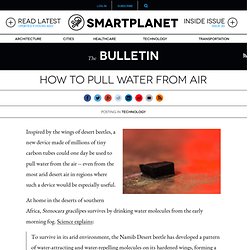

Owls May Hold the Secret to Quieter Wind Turbines and Jets. From a distance, wind turbines can seem sort of peaceful—a 21st century version of the windmill.

Get up close, and it’s a different picture. When they get going, the tips of the blades (which can be more than 100 feet long) can move faster than winds in a category five hurricane. That’s why wind turbines—to the dismay of renewable energy advocates—have been the target of noise and (hard to verify) health complaints. In some cases, the blades are intentionally slowed down, making them less effective at generating electricity. Now, as they’ve done so many times before, researchers have turned to nature to try to find a solution to the noise problem. A team at the University of Cambridge has published research based on the wings of large owls, masters at silent swooping—to the dismay of voles—at high speeds, undetected.
“No other bird has this sort of intricate wing structure,” says Professor Nigel Peake of Cambridge’s Department of Applied Mathematics and Theoretical Physics. Biomimicry - Lifes Principles. Nature has some pretty high quality control standards!

What this tells us is that there must be some very powerful strategies for survival embedded in the 30 million species that exist on earth today. In other words, the species thriving today are the success stories. In trying to identify and emulate the strategies these successful creatures share, Life’s Principles provide us with important tools for strategic design. Life’s Principles are what biomimics use to both drive and evaluate the sustainability and appropriateness of our designs. Scientists have been working for centuries trying to identify how nature works, to unlock the secrets of survival, and to unravel life’s mysteries. In biomimicry, these patterns are called deep principles. Seven fabrics inspired by nature: from the lotus leaf to butterflies and sharks. With technology poised to change the way we dress in the future, here are seven examples of innovative fabrics that take their cue from the natural world.

Hooked on Velcro Invented in 1948, Velcro has become a textbook example of biomimicry – an emerging science that emulates nature to solve human problems. And yet Velcro's invention was something of a happy accident, for which we must thank the dog of Swiss inventor George de Mestral. After a walk in the fields, de Mestral noticed burrs stuck to his trousers and his dog's fur, which led to his creation of a new hook and loop fastening device, Velcro. Exploring the lotus effect Water spilled on a lotus leaf does not wet its surface but simply beads up and rolls off, cleaning its surface from accumulated dust and dirt in the process. Fast-as-a-shark swimsuit Golden Orb spider silk cape Although humans learned to spin silk from silkworms as early as 3500 BC, spider silk was introduced much later, in 18th century France. The McDonough Conversations: Why nature needs humans.
This is the latest installment in a regular series of conversations with William McDonough (@billmcdonough), designer, architect, author and entrepreneur.

View previous columns here. Joel Makower: You’ve been talking lately about the fact nature needs humans as much as humans need nature. That’s the opposite of what some conservation groups are talking about — that “humans need nature more than nature needs humans.” Bill McDonough: I’ve been thinking specifically about the collapse of the monarch butterfly. This is one of the most amazing indicator species. The number of monarch butterflies is at the lowest point in more than two decades. That’s because the forests were being cut down in Mexico. Makower: So, logging is what’s destroying monarchs? McDonough: Today, the collapse of the monarch is connected to the loss of milkweed, resulting from herbicide-resistant corn and soybean crops and herbicides used in the United States. Makower: So, what does it mean to pull back? How to pull water from air.
Inspired by the wings of desert beetles, a new device made of millions of tiny carbon tubes could one day be used to pull water from the air -- even from the most arid desert air in regions where such a device would be especially useful.

At home in the deserts of southern Africa, Stenocara gracilipes survives by drinking water molecules from the early morning fog. Science explains: To survive in its arid environment, the Namib Desert beetle has developed a pattern of water-attracting and water-repelling molecules on its hardened wings, forming a series of peaks and troughs. By angling its body into the wind, the beetle can use this pattern to gather water molecules from the morning fog, forming droplets that are directed down into its mouth.
So, taking the beetle's lead, Pulickel Ajayan and colleagues from Rice University applied a top layer of water-loving polymers and a bottom layer of water-repelling polymers to a tiny forest comprised of cylinders of carbon atoms. [Rice via Science]